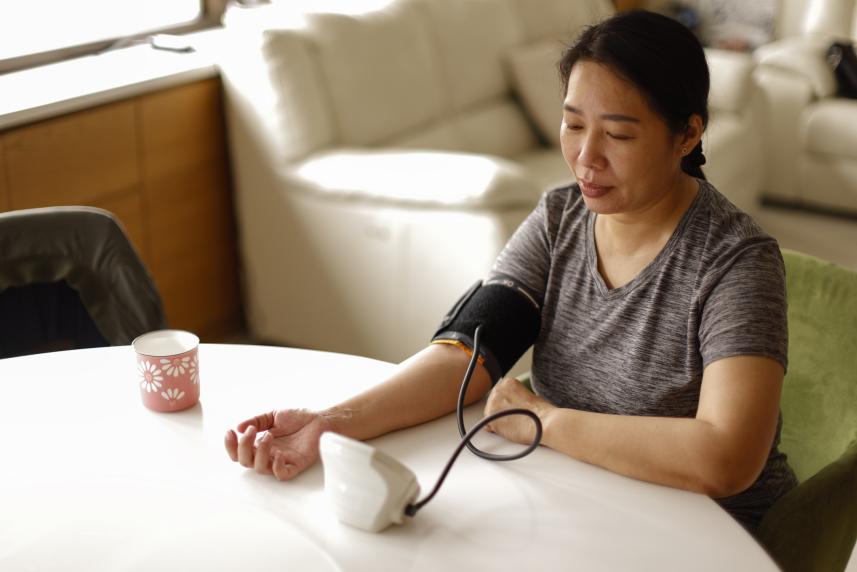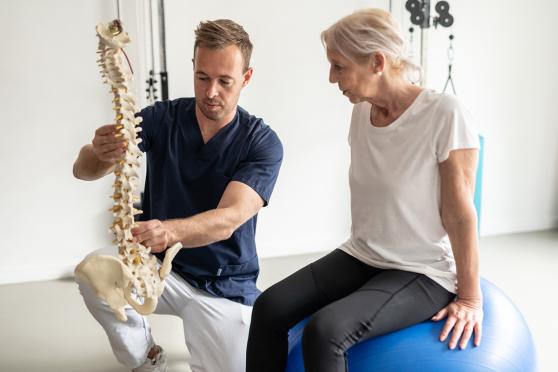How to take your blood pressure the right way
Thinking about monitoring your blood pressure at home? Here’s your guide to picking the right cuff, taking accurate readings, and understanding your results.

If you’re not sure whether you have high blood pressure (HBP), it’s time to get checked. Your risk increases with age, according to Martha Gulati, M.D., of the American College of Cardiology. Genetics can also play a role in how high or low your blood pressure is, in addition to lifestyle factors, such as your diet, activity level, and if you’re a smoker.
But did you know that a doctor’s office isn’t the only place you can monitor your blood pressure? You can have your blood pressure checked at many pharmacies, such as Walgreens and CVS. And the American Heart Association (AHA) recommends that anyone with high blood pressure should monitor their readings at home. Here’s how to do it.
How to screen at home
You want to buy a monitor that will be accurate and easy for you to use. Avoid those that wrap around your wrist, Dr. Gulati says; they don’t always give you true readings. Instead, she recommends a cuff-based monitor. These can range from $25 to $100. The two most common types of monitors measure pressure via an arm cuff:
- Traditional cuffs. Wrap the cuff around your upper arm, squeeze a rubber ball, and use a stethoscope to hear knocking sounds signaling systolic and diastolic pressure. This monitor is accurate, Dr. Gulati says, but only if it is used correctly.
- Digital cuffs. After you put on the cuff, you press a button, and the device does the rest. Newer models wirelessly connect to a smartphone app and keep a record of all your readings. Some provide charts, making it easy to spot trends.
When in doubt, ask your doctor or pharmacist for their recommendations, and discuss the correct cuff size for you.
Understand what your blood pressure numbers mean
Your blood pressure is composed of two numbers:
- Systolic (top number), the pressure in your arteries when your heart beats
- Diastolic (bottom number), the pressure in your arteries when your heart is resting between beats
Follow the latest AHA guidelines below. Depending on your numbers, your doctor may recommend lifestyle changes or medication to help manage your blood pressure.
| NORMAL | ELEVATED | HBP STAGE 1 | HBP STAGE 2 |
| SYSTOLIC less than 120 — and — DIASTOLIC less than 80 | SYSTOLIC from 120 to 129 — and — DIASTOLIC less than 80 | SYSTOLIC from 130 to 139 — and — DIASTOLIC from 80 to 89 | SYSTOLIC at least 140 — and — DIASTOLIC at least 90 |
| Congratulations! Keep eating healthy foods and exercising. | Start making healthier lifestyle choices. | Make lifestyle changes and, in some cases, take medication. | Make lifestyle changes, take medication, and see your doctor for regular follow-ups. |
Strategies for accurate at-home readings
Blood pressure varies throughout the day. It can also spike in response to something you eat or sudden stress. Get the most accurate and consistent readings with tips from the AHA:.
- Measure at the same time every day. Reminder: Don’t take the measurement over clothes, and make sure the bottom of the cuff is directly above the bend in your elbow. Follow your monitor’s instructions.
- Take multiple readings. When you measure, take two or three readings about one minute apart. Record your numbers so you can bring them with you to your next doctor’s appointment.
- Leave a half-hour window. Avoid smoking, drinking caffeinated beverages, or exercising within 30 minutes of measuring your blood pressure.
- Stay still and quiet. Empty your bladder and rest in silence for at least five minutes before taking your measurement.
- Sit correctly. Choose a chair that has back support (for example, a dining room chair rather than a sofa). Place both feet on the floor and rest your arm on the table with your upper arm at the same level as your heart.


